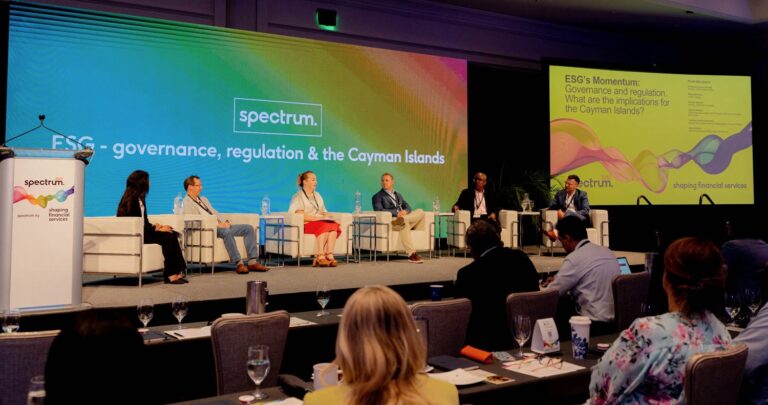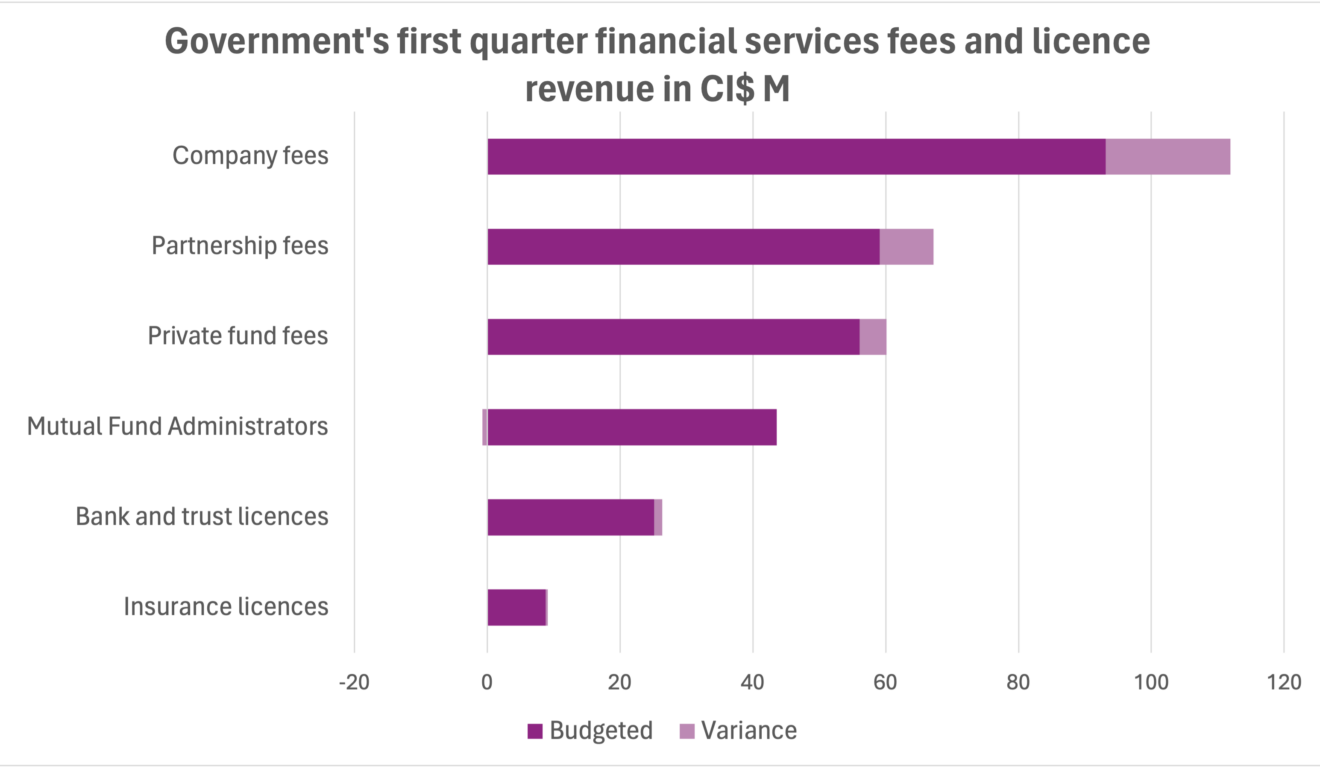
Panellists at the Spectrum 2023 conference discussed the latest developments in ESG and sustainable finance.
The Cayman Islands is feeling the brunt of climate change more than most.
Hurricanes, which tended to be few and far between, are now a regular occurrence, threatening widespread destruction in the region with several major named storms representing the new norm each year between June and November.
Just as Cayman’s financial services firms have learned to adapt, prepare for and effectively manage those climate-related risks in their operations; as the world’s leading fund domicile after the United States and a major capital markets jurisdiction, Cayman is also ideally placed to play a major role in sustainable finance efforts.
While the government confirmed it will develop a sustainable finance strategy at the Spectrum 2023 conference in September, Cayman has for now taken an observer approach when it comes to financial sustainability regulation.
According to panellists at the conference, this is likely the right approach, allowing the jurisdiction to learn from the mistakes made elsewhere.
Currently, Europe is leading the way on ESG (Environmental, Social and Governance) issues with several regulatory initiatives, which among other things include sustainability reporting for funds.
On the other side of the pond in the United States, in sharp contrast, ESG has become politicised and some Republican-led US states, like Florida or Texas, even banned investments in ESG funds or bonds.
Despite these attention-grabbing headlines, and the ongoing debate in the United States, panellists noted there is no getting away from ESG.
Market dip but demand still strong
Maples and Calder partner Pádraig Brosnan said all US asset managers his firm is working with have global ESG committees, which include functions from tax to regulatory, finance and corporate, who are thinking about ESG all the time.
“I think the asset managers themselves know, if they want to be in Europe – a market with a lot of capital in it – that they have to have an ESG slant to their business,” he said.
Although the number of ESG funds has declined and the performance has waned in the past year, Brosnan said the overall appetite from investors and asset allocators continues unabated.
ESG funds overall have underperformed since the start of Russia’s war in Ukraine, as European countries have shifted their energy supply away from Russian oil and gas towards natural gas from Northern Europe, Libya and the United States.
Meanwhile coal experienced a resurgence as countries like Germany at the same time abandoned nuclear energy. All this turmoil pushed fossil fuel prices higher, even if just for the short term, making sustainability-focused investments comparatively less attractive.
Dedicated accounting standards and new regulations to prevent greenwashing are also shaking out some of the supposed sustainability funds that do not have verifiable green credentials.
Brosnan said, while it is up to the governments to create better regulation, financial professionals and fund lawyers like himself must create the products that investors will want to invest in and that make money.
Improving the product, selling it and then collecting the data to demonstrate that it can generate returns is where the industry finds itself currently, he added.
Sustainability reporting
In terms of transparency frameworks, the EU’s Sustainable Finance Disclosure Regulation (SFDR) is a frontrunner in Europe.
It aims to provide a comprehensive framework to capture ESG performance of investment fundsand other financial market participants and sets out how sustainability information must be disclosed at both the entity and the product level.
The extent of the reporting is based on the fund’s classification in one of three categories.
They are the Article 6 category, which includes funds that do not promote ESG characteristics and do not integrate sustainability into their investment processes.
Article 8, known as ‘light green’, is a category for funds that promote ESG criteria but do not have a sustainable investment objectives.
And Article 9 is reserved for funds, dubbed ‘dark green’, which are expected to target sustainable investments in line with their sustainable investment objectives.
So far reporting has a long way to go as only 3% of funds fall into the dark green and 20% in the light green category.
Implementation of the reporting requirements has also not been without hiccups and data collection is a source of frustration for many funds, while the regulation itself has been confusing in parts.
Brosnan noted that by taking note of these issues Cayman can avoid the mistakes that are made in Europe, when deciding on local requirements in terms of sustainability disclosures.
On the frontline of the climate emergency
Joanna Hossack, senior associate at Collas Crill noted that there are two elements to ESG in Cayman: the financial services aspect and the on-island aspect.
The two are very closely linked, she said.
“We are on the very frontline of the climate emergency here. We’re very vulnerable to extreme weather. But we also can be hit by the geopolitical aspects.”
Because Cayman is so reliant on imports, these can affect natural resources and supply chains and pose a risk to both food and energy security.
At the same time, the islands are in a very strong position to address this climate emergency, because of the strength of the financial services industry, with close to 30,000 funds and more than US$8.5 trillion in net assets under management.
“So that affords us lots of opportunities in terms of carbon offsetting and financial capital solutions,” she said.
Climate-linked bonds
Hossack advocated for Cayman to become the go-to jurisdiction for sustainable finance instruments.
“I think that we have we have great opportunity here to establish ourselves as the domicile of choice for issuing thematic bonds such as green bonds, blue bonds and sustainability-linked bonds.”
While green bonds raise funds to finance specific climate or environmental projects, blue bonds also function like traditional bonds but pledge the use of the proceeds for the protection and conservation of marine ecosystems.
The Seychelles was the first country to issue a blue bond in 2018. In 2021, Belize issued a sovereign blue bond out of Cayman that allowed the country to refinance some of its public debt at a lower rate to deploy the savings for marine conservation.
This can for example include initiatives in water and waste management, coral reef protection, sustainable fisheries, offshore wind energy, emission reductions in maritime transport or more sustainable coastal tourism. They can therefore be particularly relevant in the Caribbean region.
In 2022, Barbados became the third country to partner with conservation organisation The Nature Conservancy to issue a blue bond to redirect a portion of its sovereign debt service into marine conservation.
Hossack said, “The Caribbean region needs huge investment in terms of green energy transition, and climate change adaptation, sustainable agriculture and fisheries. I think there’s an opportunity to go more widely, doing a regional green-blue bond – I would call it the Caribbean turquoise bonds – to attract that kind of investment.”
This would enable Cayman to leverage its own immense natural capital, such as the mangroves and extensive wetlands, which absorb large quantities of greenhouse gases.


